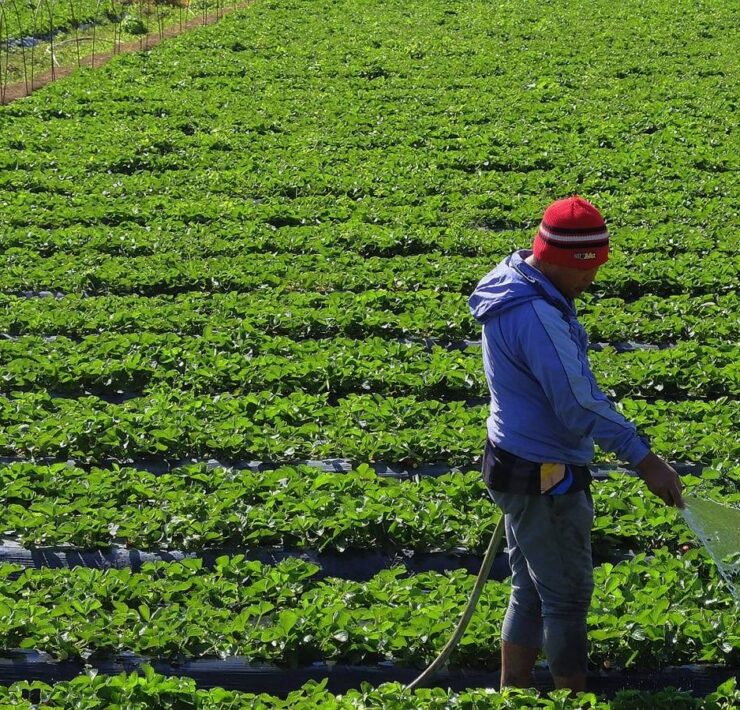Pinoy nutrition: A national budget priority

Last July 29, the Department of Budget and Management (DBM) led by Sec. Ameah Pangandaman submitted to Congress the proposed National Budget for fiscal year (FY) 2025. It amounts to P6.325 trillion—which was in fact trimmed down by the DBM from the total proposals from various national government agencies, which hit a whopping P9.2 trillion.
The budget focuses on the Social Services sector (education and health, among others), which will receive P2.12 trillion, and the Economic Services sector (the Build Better More infrastructure program, among others), which will receive P1.85 trillion. But let me zone in on two priorities relevant to food.
Agriculture
One of the key priorities is strengthening the agricultural sector with the aim of self-sufficiency in food security. That is, we will rely more on our own agricultural output rather than on imports to feed our people.
For this goal, the agriculture sector will receive P211.3 billion. The Department of Agriculture (DA) alone will receive P129 billion, a 13-percent increase from its P114.3 billion allocation in this year’s approved national budget.
Specifically to improve rice production, according to the Budget Message of President Ferdinand Marcos Jr. (a copy of which you can view at the DBM website, www.dbm.gov.ph), “the DA’s National Rice Program will receive a budget of P31.4 billion to enhance the resiliency and competitiveness of Filipino rice farmers while ensuring the country’s access to safe and nutritious rice.” This will be achieved by expanding fertilizer support to farmers, which will be done through discount vouchers for which P9 billion has been allotted.
Aside from rice, the National Corn Program will receive P5.3 billion; the National Livestock Program will receive a 23 percent boost to receive P5.3 billion; and the National Fisheries Program of the Bureau of Fisheries and Aquatic Resources will receive a boost of 13.5 percent with its allotment of P8.4 billion.
The National Fisheries Program will increase the production of top fish commodities, such as bangus, tilapia, shrimp, shellfish, and even seaweed, through livelihood support and interventions for fisherfolk. The Seaweed Development Program, for instance, will receive an allocation of P1.1 billion.
Nutrition
Another focus is on improving nutrition, as specified in the Philippine Development Plan 2023-2028, which stresses that we must “adopt a whole-of-society approach in promoting a healthy lifestyle and a culture of active health-seeking behavior among Filipinos across age groups and income classes; implement measures to prevent and address wasting, stunting, and obesity; strengthen nutrition-specific, nutrition-sensitive, and enabling interventions, especially at the local level; and improve nutrition governance, especially in local government units”.
Towards these goals, the Family Health, Immunization, Nutrition, and Responsible Parenting program of the Department of Health has been allocated P1 billion. This is for the procurement of food, diet, and health packages targeted to children, as well as pregnant and lactating mothers.
To address undernourishment, the National Nutrition Council has been given an allocation of P319 million, of which P25 million is earmarked for the Tutok Kainan Dietary Supplementation Program.
Meanwhile, the Philippine Multi-Sectoral Nutrition Project — a key initiative of the Department of Social Welfare and Development (DSWD), in collaboration with the DOH — has been allocated P2.4 billion. The project, which targets 275 municipalities, aims to deliver a package of nutrition-specific and nutrition-sensitive interventions to improve key behaviors and practices that reduce stunting, addressing malnutrition at its root cause.
The Supplementary Feeding Program of the DSWD has been increased by 26.9 percent to P5.2 billion in order to provide hot meals to 1,583,316 children and milk feeding to 106,834 children enrolled in LGU-managed Child Development Centers and Supervised Neighborhood Play programs to ensure that proper nourishment that is essential for the growth and development of children is somehow provided.
Finally, the Food Stamp Program of the DSWD will receive P1.9 billion to provide cash assistance through electronic benefit transfer cards to 50,000 Filipino households in the lowest income bracket, giving them the capacity to pay merchants directly for food that they themselves can choose and ensuring access to more nutritious meals, instead of the usual instant noodles and sardines received as assistance.
Agenda for prosperity
These are just some of the specific items in the FY 2025 proposed National Budget — as highlighted in the President’s Budget Message — that will address agriculture and nutrition. Certainly there is much work to be done.
But hopefully, the budget provided will be approved — and more importantly, the approved allocations will be utilized well and fully — so that the goals set out in the Philippine Development Plan will be achieved and felt by the Filipino people, especially those who need assistance the most.





















